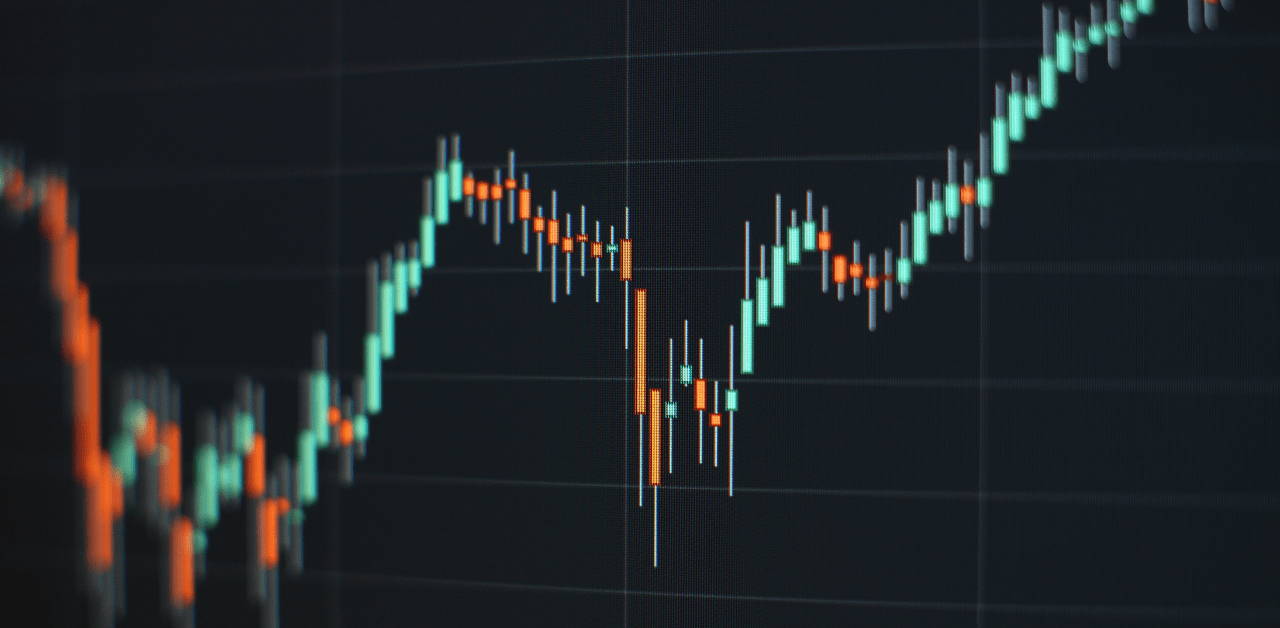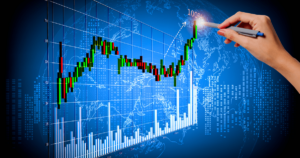Wyckoff Trading offers investors a unique opportunity to unlock their investment potential by utilizing the principles of the Wyckoff Method. This technical analysis approach enables investors to make logical decisions based on studying the relationship between demand and supply forces in the market. By understanding the four phases of the Wyckoff Method – accumulation, markup, distribution, and markdown – investors can identify different trading behaviors and price actions, allowing them to optimize their investment strategies.
Key Takeaways:
- The Wyckoff Method is a powerful technical analysis approach that helps investors analyze market behavior.
- Understanding the Wyckoff Method’s four phases (accumulation, markup, distribution, and markdown) is essential for identifying trading opportunities.
- Richard Wyckoff’s principles, including the laws of supply and demand, cause and effect, and effort and result, provide insights into market behavior.
- The Wyckoff Method can be applied to both traditional financial markets and the cryptocurrency sphere.
- Implementing a Wyckoff Trading strategy requires analyzing market data, identifying entry and exit points, and managing risk effectively.
With its versatile application and comprehensive approach to trading, Wyckoff Trading empowers investors to unlock their investment potential and achieve success in various asset classes.
Understanding the Wyckoff Method and Its Phases
The Wyckoff Method, developed by Richard Wyckoff, provides investors with a comprehensive framework for understanding market behavior through its distinct phases. These four phases, namely accumulation, markup, distribution, and markdown, play a crucial role in analyzing price actions and trading behaviors.
Accumulation is the first phase of the Wyckoff Method. It represents a period of consolidation where smart money investors accumulate shares at lower prices. This phase is characterized by a narrow trading range and low trading volume. As the accumulation phase unfolds, supply diminishes, and demand begins to build up, indicating a potential upcoming breakout or uptrend.
After the accumulation phase, the market enters the markup phase. This phase is marked by an increase in buying pressure and a significant rise in prices. It is during this phase that the smart money investors start to sell their accumulated shares to less-informed market participants, causing prices to increase rapidly. The markup phase is an opportunity for traders to ride the uptrend and capture profits.
Following the markup phase is the distribution phase. In this phase, smart money investors start to distribute their holdings to the market, leading to a decrease in prices. The distribution phase is characterized by increased selling pressure and a widening trading range. Traders who recognize this phase can take advantage of the potential downtrend and adjust their trading strategies accordingly.
Finally, the markdown phase represents a period of significant selling pressure and a rapid decrease in prices. This phase occurs as supply outweighs demand, leading to a prolonged downtrend. Traders who understand this phase can seek short-selling opportunities or adjust their portfolios to avoid losses.
| Phase | Characteristics |
|---|---|
| Accumulation | Narrow trading range, low volume, potential trend reversal. |
| Markup | Increasing prices, high buying pressure, uptrend. |
| Distribution | Wide trading range, increased selling pressure, potential downtrend. |
| Markdown | Rapid price decrease, high selling pressure, prolonged downtrend. |
“The Wyckoff Method helps investors identify the phases of the market and make informed decisions based on the laws of supply and demand,” said Richard Wyckoff, the pioneer of this approach.
Understanding the Wyckoff Method and Its Phases
The Wyckoff Method provides investors with a comprehensive framework to analyze market behavior and make logical trading decisions. By understanding the distinct phases of accumulation, markup, distribution, and markdown, traders can identify potential trend reversals, uptrends, and downtrends. Richard Wyckoff’s principles, such as the laws of supply and demand, cause and effect, and effort and result, add further insights to market analysis. Whether in traditional financial markets or the cryptocurrency sphere, the Wyckoff Method offers traders a versatile approach to navigating various asset classes.
Applying Wyckoff Market Analysis
Wyckoff Market Analysis empowers investors to analyze market trends and make informed trading decisions by recognizing key chart patterns. By understanding the Wyckoff Method and its four phases (accumulation, markup, distribution, and markdown), investors can gain valuable insights into market behavior and potential trading opportunities.
One important aspect of Wyckoff Market Analysis is the recognition of various chart patterns that indicate changes in supply and demand dynamics. These patterns, such as the Wyckoff Spring and Upthrust, can signal potential reversals or trends in the market. By identifying these patterns, investors can anticipate price movements and adjust their trading strategies accordingly.
In addition to chart patterns, Wyckoff Market Analysis also emphasizes the importance of volume analysis. The volume provides valuable information about the strength of buying and selling forces in the market. By studying the relationship between price and volume, investors can gauge market sentiment and identify areas of accumulation or distribution.
Key Components of Wyckoff Market Analysis:
- Recognizing Wyckoff chart patterns, such as Springs and Upthrusts.
- Understanding the role of volume in analyzing market behavior.
- Identifying areas of accumulation or distribution.
- Interpreting the relationship between supply and demand forces.
By mastering these components, investors can develop a comprehensive understanding of the market and make more confident trading decisions. Wyckoff Market Analysis provides a systematic approach to analyzing market trends and has proven to be effective in both traditional financial markets and the cryptocurrency sphere.
| Wyckoff Market Analysis | Benefits |
|---|---|
| Identifies potential trading opportunities | Maximizes investment results |
| Enhances understanding of market behavior | Minimizes trading risks |
The Principles of Richard Wyckoff
Richard Wyckoff’s principles provide valuable insights into market behavior and help investors gain an edge in their trading strategies. By understanding the laws of supply and demand, cause and effect, and effort and result, investors can make informed decisions about when to buy or sell assets.
The law of supply and demand states that the price of an asset is determined by the balance between buyers and sellers. When there is more demand than supply, prices tend to rise, and vice versa. This principle allows investors to identify potential trends and reversals in the market.
Cause and effect is another key principle in Wyckoff’s methodology. It suggests that price movements are a result of underlying factors or events that drive market behavior. By analyzing the causes of price movements, investors can anticipate future price actions and make profitable trades.
“Stocks are never too high to buy and never too low to sell.”
Richard Wyckoff’s principle of effort and result emphasizes the importance of analyzing the volume of trading activity. When the price moves in the expected direction with high trading volume, it indicates a strong market trend. Conversely, if the price moves against expectations with low trading volume, it suggests a weak market trend.
Applying these principles in conjunction with the Wyckoff Method provides investors with a comprehensive framework for analyzing market behavior. By studying the four phases of accumulation, markup, distribution, and markdown, investors can identify potential trading opportunities and maximize their investment returns.
| Laws of Supply and Demand | Cause and Effect | Effort and Result |
|---|---|---|
| Price is determined by the balance between buyers and sellers | Price movements are driven by underlying factors or events | The volume of trading activity indicates market strength or weakness |
Wyckoff Accumulation and Distribution
Wyckoff accumulation and distribution are crucial phases within the Wyckoff Method, indicating potential shifts in market direction. These phases are identified through the analysis of price and volume patterns, providing valuable insights for traders looking to identify potential buying or selling opportunities. Understanding and recognizing these patterns can help investors make informed decisions based on the principles of supply and demand.
In Wyckoff accumulation, the market is in a consolidation phase where demand begins to outweigh supply. This phase is characterized by a series of higher lows and a gradually increasing volume, indicating an accumulation of shares by smart money investors. As accumulation progresses, the market prepares for a potential breakout, signaling a shift in price direction.
On the other hand, Wyckoff distribution occurs when supply begins to exceed demand, leading to a potential reversal in market direction. During this phase, the market exhibits a series of lower highs and decreasing volume, indicating selling pressure from distribution-oriented participants. Traders who recognize distribution patterns can anticipate potential price declines and adjust their trading strategies accordingly.
Identifying Accumulation and Distribution Patterns
Accumulation and distribution patterns can be identified using various technical tools and indicators. Some common patterns include the Wyckoff Spring, which occurs when prices briefly dip below a support level before quickly rebounding, and the Wyckoff Upthrust, which happens when prices briefly break above a resistance level before reversing lower.
Traders can also use the Wyckoff Accumulation Schematic and Distribution Schematic to analyze price and volume relationships during these phases. These schematics help investors visualize the stages of accumulation and distribution and provide a roadmap for potential price movements.
| Wyckoff Accumulation | Wyckoff Distribution |
|---|---|
| Higher lows | Lower highs |
| Increasing volume | Decreasing volume |
| Signs of absorption | Signs of distribution |
By combining these tools and techniques, traders can enhance their understanding of accumulation and distribution patterns within the Wyckoff Method. Recognizing these phases and their associated signs can provide valuable insights for making effective trading decisions.
Implementing a Wyckoff Trading Strategy
Implementing a Wyckoff Trading strategy involves a systematic approach to analyzing market data and executing trades with precision. By following the principles of the Wyckoff Method and using the right tools, investors can enhance their decision-making process and increase their chances of success in the market.
One key aspect of implementing a Wyckoff Trading strategy is effectively analyzing market data. Traders need to study price charts, volume data, and other relevant indicators to identify potential trading opportunities. By understanding the relationship between supply and demand forces, traders can spot accumulation or distribution phases, which indicate potential market reversals or trend continuations.
Additionally, precise entry and exit points are crucial in a Wyckoff Trading strategy. Traders should define specific price levels or indicators that trigger their trades. By using stop-loss and take-profit orders, they can manage their risk and protect their capital. It is also important to regularly review and adjust the strategy based on market conditions to stay adaptable and maximize profitability.
| Key Steps for Implementing a Wyckoff Trading Strategy |
|---|
| 1. Study market data, including price charts and volume indicators |
| 2. Identify accumulation or distribution phases for potential trading opportunities |
| 3. Define precise entry and exit points based on price levels or indicators |
| 4. Use stop-loss and take-profit orders to manage risk |
| 5. Continuously review and adjust the strategy based on market conditions |
- “A systematic approach to analyzing market data and executing trades is essential in a Wyckoff Trading strategy.”
- “Traders need to study price charts, volume data, and indicators to identify potential trading opportunities.”
- “Defining precise entry and exit points and managing risk are key components of a successful Wyckoff Trading strategy.”
Using Wyckoff Trading Software
To streamline the implementation of a Wyckoff Trading strategy, traders can leverage specialized software designed for Wyckoff Market Analysis. These software tools provide powerful features for analyzing market data, identifying Wyckoff chart patterns, and executing trades with ease.
Some popular Wyckoff Trading software options include:
- Wyckoff Analytics: Offers a comprehensive suite of tools for Wyckoff traders, including charting, scanning, and backtesting capabilities.
- TradeGuider: Provides real-time Wyckoff analysis and indicators, helping traders identify potential market turning points.
- Investing.com: Offers a range of technical analysis tools, including Wyckoff-based indicators, for traders of all skill levels.
By utilizing these software tools, traders can enhance their analysis process, streamline their trading decisions, and improve overall profitability in the market.
Wyckoff Trading in Traditional and Cryptocurrency Markets
The Wyckoff Method is not limited to traditional financial markets, as its principles can be applied to the dynamic and evolving cryptocurrency markets as well. This technical analysis approach provides traders with a comprehensive framework for understanding and navigating the price movements of various asset classes.
One of the key advantages of applying the Wyckoff Method to cryptocurrency markets is its ability to identify accumulation and distribution phases. These phases represent periods of buying or selling pressure, allowing traders to anticipate potential market reversals or trends. By studying the supply and demand dynamics within the cryptocurrency market, investors can gain valuable insights into the behavior of different digital assets.
When applying the Wyckoff Method to cryptocurrency trading, it’s important to consider the unique characteristics of this market. Cryptocurrencies are known for their high volatility and rapid price movements, requiring traders to adapt their strategies accordingly. By combining the principles of the Wyckoff Method with technical indicators specific to cryptocurrencies, investors can enhance their trading decisions and capitalize on market opportunities.
Additionally, the principles established by Richard Wyckoff, such as the laws of supply and demand, cause and effect, and effort and result, remain relevant in the context of cryptocurrency markets. These principles provide a solid foundation for understanding the underlying forces that drive price movements in both traditional financial markets and the cryptocurrency sphere.
Wyckoff Trading in Traditional and Cryptocurrency Markets
| Advantages of Wyckoff Trading in Traditional Markets | Advantages of Wyckoff Trading in Cryptocurrency Markets |
|---|---|
|
|
“The Wyckoff Method provides traders with a comprehensive approach to trading various asset classes, including traditional financial markets and the dynamic cryptocurrency sphere.”
In conclusion, the Wyckoff Method offers investors a powerful tool for analyzing and trading in both traditional financial markets and the cryptocurrency space. By understanding the principles of supply and demand, as well as the different phases of the Wyckoff Method, traders can make informed decisions and unlock the potential for profitable trades.
Conclusion
Wyckoff Trading provides investors with a comprehensive approach to market analysis and trading, unlocking the potential for greater investment success. By understanding and applying the principles of the Wyckoff Method, investors can make logical and informed decisions based on the relationship between demand and supply forces in the market.
The Wyckoff Method consists of four phases: accumulation, markup, distribution, and markdown, which represent different trading behaviors and price actions. These phases serve as valuable indicators of market trends and can help investors identify potential entry and exit points.
Richard Wyckoff’s principles, including the laws of supply and demand, cause and effect, and effort and result, provide further insights into market behavior. By studying these principles, investors can gain a deeper understanding of the forces driving market movements and make more strategic investment decisions.
Furthermore, the versatility of the Wyckoff Method allows it to be applied to various asset classes, including traditional financial markets and the cryptocurrency sphere. Whether investing in stocks, commodities, or cryptocurrencies, the Wyckoff Method offers a comprehensive and effective approach to analyzing and trading these markets.
Overall, Wyckoff Trading empowers investors to unlock the potential of their investments by leveraging the insights provided by the Wyckoff Method. By understanding market behavior and utilizing strategic trading strategies, investors can increase their chances of success and achieve their investment goals.
FAQ
What is the Wyckoff Method?
The Wyckoff Method is a technical analysis approach that helps investors make logical decisions based on studying the relationship between demand and supply forces in the market.
How many phases are there in the Wyckoff Method?
There are four phases in the Wyckoff Method: accumulation, markup, distribution, and markdown.
What do the phases in the Wyckoff Method represent?
Each phase represents different trading behaviors and price actions in the market.
What insights do Richard Wyckoff’s principles provide?
Richard Wyckoff’s principles, such as the laws of supply and demand, cause and effect, and effort and result, provide insights into market behavior.
Can the Wyckoff Method be applied to cryptocurrency markets?
Yes, the Wyckoff Method can be applied to both traditional financial markets and the cryptocurrency sphere, offering traders a comprehensive approach to trading.








